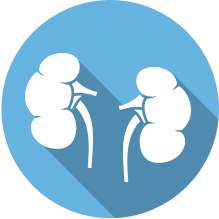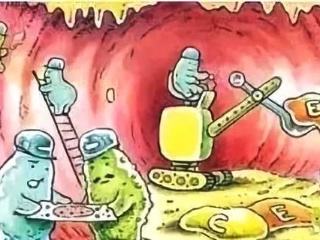SCI论文(www.lunwensci.com):
摘要:肾移植是治疗终末期肾病的有效手段,随着各种免疫抑制剂和广谱抗生素的大量使用,肾移植受者术后真菌感染的问题日益突出,现 在已经成为移植肾失功和患者死亡的重要原因之一。现在就真菌感染的发病、诊断及治疗进展作一综述。
关键词:肾移植;侵袭性真菌病;治疗药物相互影响
本文引用格式:乔鹏飞,孙煦勇.肾移植术后真菌感染的诊断与治疗进展[J].世界最新医学信息文摘,2019,19(30):114-116.
Progress in Diagnosis and Treatment of Fungal Infection after Kidney Transplantation
QIAO Peng-fei1, SUN Xu-yong2*
(l.Guilin Medical College, Guilin Guangxi; 2. Institute of Transplantation Medicine, 923 Hospital of the People S Liberation Army, Nanning Guangxi)
ABSTRACT: Kidney transplantation is an effective means of treating end-stage kidney disease. With the extensive use of various immunosuppressive agents and broad-spectrum antibiotics, fungal infection has become an increasingly prominent problem in complications after kidney transplantation.Now it has become one of the important reasons for the loss of function of the transplanted kidney and patient death. This article reviews the progress in the pathogenesis, diagnosis and treatment of fungal infections.
KEY WORDS: Kidney transplantation;Invasive fungal disease;Interaction of therapeutic drugs
0引言
肾移植术后感染最常见的病原菌是细菌,而真菌或病毒较少 见,但侵袭性真菌感染病是肾移植后移植物功能丧失和受者死 亡的重要原因之一⑴。侵袭性真菌病 (invasive fungal disease, IFD)是指真菌在各个脏器或血液中扩增,并导致顽固炎症反应 及组织损伤的疾病⑵。真菌来源包括供体衍生、保存液污染和术 后免疫力降低等等。以下就近年肾移植患者真菌感染的发病、 诊断及治疗进展作一综述。
1 IFD的发病及危险因素分析
最常见的IFD为侵袭性念珠菌病(53%),其次是侵袭性曲霉 菌病(19%),隐球菌病(8%)、非曲霉菌病(8%)、地方性真菌病(5%) 和颧真菌病(2%)等
[3'
4]O其中混合性感染占多数。
IFD感染的高危因素包括⑸:早期:1)移植物功能丧失和血 液透析;⑵移植后血液透析;⑶长时间大剂量使用糖皮质激素; (4)巨细胞病毒感染;(5)过度免疫抑制。晚期(移植〉4个月)主 要包括:1)巨细胞病毒感染;(2)过度免疫抑制。实体器官移植 患者感染发生的时间有一定规律,绝大多数患者感染均发生在 移植术后6个月以内,以及免疫抑制剂逐渐调整平衡状态之前, 发生率为1.3%
〜18.9%。
2 IFD的诊断
由于真菌感染早期临床表现并不典型,CT、肺泡支气管灌洗 和开放性肺活检针对肺部感染诊断有一定帮助,但实质器官组 织活检和真菌培养是确诊IFD的首选方法。在术后恢复过程中 持续发热,或无法解释的病情加重,以及使用多种抗生素治疗后 效果不佳,均应考虑IFD。一旦考虑IFD应立即多次、多途径采 集血尿等体液进行培养。在无法排除真菌感染可能情况下,必 要时行组织活检或真菌培养。而免疫学检测、PCR技术等非真 菌培养的方法对一些IFD的早期诊断具有重要价值,真菌大量 进入机体后,血循环短期内即可出现大量可溶性抗原成分,因此 可用免疫学方法检测真菌抗原成分从而做到早期诊断。如1-3, P-D-Glucan葡聚糖实验,PCR检测以及ELISA法检测半乳甘露 聚糖抗原等。
1-3, p-D-Glucan葡聚糖是所有酵母菌及丝状真菌细胞壁 上的一种成分,包括曲霉菌、念珠菌、酵母菌等,能特异性激活G 因子,此过程称为G试验[叫BDG检测在一般人群中对IFD诊 断显示出良好的敏感性和特异性,甚至高于血培养,并且优于甘 露聚糖定量
[7]。对于所有类型的患者,BDG测试也包括在2008 年EORTC/MSG(欧洲癌症研究和治疗组织/真菌病研究组)侵袭性真菌感染诊断标准中⑻。在大多数研究中,葡聚糖检测的灵 敏度>65%,界值为80pg/mL,特异度>80%,阴性预测值〉85%。 这种方法的局限性是由于其缺乏对念珠菌病检测的特异性⑼:铜 绿假单胞菌菌血症患者和接受真菌衍生抗生素治疗,静脉注射 免疫球蛋白或白蛋白治疗的患者均有假阳性结果。
半乳甘露聚糖(GM)是位于曲霉菌细胞壁的一种成分,在侵 袭机体的过程中释放出来,抗原水平与在机体中侵袭程度有关, 此抗原血症表现可持续1
〜8周
[10]。研究表明检测血GM是诊断 早期肺侵袭性曲霉病的一项重要指标,同时比临床确诊真菌败 血症的时间平均提早6
-14天时。使用ELISA方法检测血液中 GM水平用于临床曲霉菌感染的早期监测和诊断
[12'
13],美国FDA 已将0.5作为GM阳性的诊断界值。针对高危患者使用1次血 液标本N 0.8或连续2次N 0.5即可使用抢先抗曲霉菌治疗。
PCR检查对于早期真菌种属的检查具有良好的应用价值
[14]。针对深部真菌感染患者PCR结果阳性率较高,明确诊断时 间较其他方法可以提前5
〜8天。针对既往无感染患者PCR检测 敏感度高达100%,特异度为73%。但我们认为PCR技术仍需进 一步研究证实,以便在实体器官移植(solid organ transplant,SOT) 中进行验证,在进行标准化之前不应将其用于常规日常诊断或 治疗监测。
3 IFD的预防
真菌感染药物控制不佳的情况下造成肾移植急性肾功能衰 竭移植肾丢失(83%)和高死亡率(17%),我们认为这证明了快速 的医疗和外科手术干预的合理性
[15]。正确识别真菌感染风险是 预防IFD的关键。因此对于可能导致IFD的来源,在各个环节 的积极预防措施非常必要
[16]o对于患者手术前要进行全面检查, 将血尿标本以及排泄物快速进行真菌学检查及培养,一旦发现 带菌状态,应积极预防性治疗,直至指标转阴后方可考虑手术。 器官获取前要对捐献者进行系统检查,排除潜在真菌感染,在获 取过程中严格注意无菌环境,器官保存液中应添加两性霉素B 等药物预防性抗真菌。移植术后ICU应严格进行环境消毒和灭 菌工作,对患者应加强呼吸道、口腔及手术切口的护理,尽早拔 除各种引流插管;预防各种并发症的发生,鉴别肾功能不全和排 斥反应;定期进行B超及CT检查,在考虑IFD时及时进行真菌 学检查。
4 IFD的治疗进展
IFD更多发生在移植受者并发症加重的后期。患者在排除 肾功能不全和急慢性排斥反应后,进行抗细菌、病毒治疗,如无 效则进一步使用抗真菌药物治疗。目前在临床常用的四大类抗 真菌药物包括咪唑类、多烯类、氟胞嘧啶和棘白菌素类。选择抗 真菌药物时必须牢记所选抗真菌剂的有效性,安全性,副作用和药物相互作用。
4.1侵袭性念珠菌病
抗真菌剂在移植受者中的作用是有限的。由于其肾毒性,两 性霉素B脱氧胆酸盐不应用于SOT,特别是在接受钙调神经磷 酸酶抑制剂的患者中。所有的咪卩坐类都与这些抑制剂相互作用, 因为它们的代谢依赖于细胞色素P450;因此,测定咪卩坐类和免疫 抑制剂的血浆水平非常重要。棘白菌素类(卡泊芬净、阿尼芬净 和米卡芬净)治疗侵袭性念珠菌病的成功率很高;与其他抗真 菌药物相比,它们在SOT受者中的副作用、肾毒性和药物相互影 响一般较少。对于近期未接受过咪卩坐类药物且未出现中度至重 度感染或严重肝损伤的非中性粒细胞减少性移植受者,一些指 南建议使用氟康卩坐治疗侵袭性念珠菌病(首剂12 mg/kg,随后6 mg/kg/d)
[18]o对于12岁以下的儿童,氟康卩坐的剂量为12 mg/kg/ d(可能有25 mg/kg的负荷剂量)。然而,在治疗时更多的人建议 使用棘白菌素类
[19]o值得注意的是,大多数侵袭性念珠菌病病 例在移植术后的早期发生,尤其是在ICU期间。
此外,SOT患者有时会出现肾衰竭或需要血液透析。在这种 情况下,免疫抑制剂的剂量本身就很复杂。使用咪卩坐类药物治疗, 特别是在这些高剂量的情况下,会出现毒性问题,药物与免疫抑 制剂的相互作用,必须检测它们的水平。移植受者经常受到念珠 菌尿的影响,尤其是肾和胰腺受者。无症状念珠菌尿的治疗通常 是不鼓励的,除非病人正在进行泌尿外科手术。对于有症状的患 者,应拔出或更换导尿管,治疗念珠菌尿7-14夭四。
4 2侵入性曲霉病
20世纪90年代脂质两性霉素B制剂的出现改善了肾移植 术后曲霉病(Invasive Aspergillosis,IA)的预后“°】。然而,从那时 起没有关于这些药物的新研究发表,很难评估治疗反应。研究分 析了 721例使用两性霉素B脂质复合物治疗IFD的免疫抑制患 者⑵】,这项研究包括109名患有IA的实体器官受者,其中54% 的受者有良好的反应。卡泊芬净是唯一经FDA和EMA批准用 于治疗难治性IA的棘球蛋白。Maertens等人
[22]证实,9个实体 器官受体中有6个获得了良好的反应。在一项对19名SOT受 者的观察研究中,Winkler等人网在接受单药治疗的78%患者 和接受联合治疗的70%患者中发现卡泊芬净作为一线治疗的良 好反应。联合治疗在有IA的实体器官受者中的作用尚未明确。 一项多中心研究分析了 40名接受伏立康卩坐和卡泊芬净作为IA 初始治疗的患者的结果仅4】,并将该组与一个接受两性霉素B脂 质配方的历史性队列进行了比较。多变量分析显示,联合治疗 降低了因烟曲霉引起的肾功能不全和IA患者亚组的90天死亡 率a】。迄今为止,已发表的波沙康卩坐或米卡芬净治疗IA型SOT 受者的经验有限,但所描述的少数结果令人满意【25-26】。
4.3隐球菌病
隐球菌感染的治疗因疾病的部位而异。肾移植受者使用这 种联合治疗可以避免肾毒性,减轻肾脏负担仅7】。几项研究表明, 氟胞嚅暄和两性霉素B联合用于诱导治疗比单用两性霉素B有 更好的应答率、更快的培养物灭菌速度和更好的临床结果卩叫使 用脂质制剂与较低的死亡率有关仅9-3。】。然而,最近对83名移植 受者进行的一项跨国研究以及对168例文献发表的回顾证实,只 有三分之一的患者同时接受5-氟胞嚅暄治疗,50%的患者采用 两性霉素B的脂质制剂进行诱导治疗
[31]o在一些研究中,氟胞 噺噬与氟康卩坐的结合也产生了良好的效果,但不如与两性霉素 B的结合"I。其他诸如伏立康卩坐或泊沙康卩坐的偶氮类药物已用 于反应良好的难治性病例,但没有研究显示其优于氟康卩坐3-34】。 广谱咪卩坐类可能是维护阶段的替代品。隐球菌瘤如果容易被发 现,必须通过外科手术切除。据估计,5-11%患有隐球菌病的肾 移植患者由于免疫抑制治疗的快速减少,可能会出现免疫重建 炎症综合征(immune reconstitution syndrome, IRS),通常在开始 抗真菌治疗后4-6周内⑶】。考虑到有IRS的肾移植受者更可能 经历与IRS同时发生的移植肾丢失,提示停止或减少免疫抑制 治疗的时间和方式至关重要
[35]O在严重病例中,使用两性霉素 B的脂质制剂而不是传统的两性霉素B,死亡率较低,不鼓励使 用传统两性霉素B,因为这些药物有较高的肾毒性风险
[36]O对 于播散性感染,建议与治疗中枢神经系统感染相同。如果诱导 期未添加氟胞嚅疇,建议延长诱导治疗4-6周。
4.4治疗药物相互影响
抗真菌治疗时应仔细地评估免疫抑制剂药物与抗真菌药物 之间的相互影响。如果使用了伏立康卩坐,钙调神经磷酸酶抑制 剂的剂量应减少50-60% 伏立康卩坐和西罗莫司的共同给药是禁忌的,但有一些研究人员通过将西罗莫司的剂量减少75- 90%来应用这个组合卽】。如果患者在服用泊沙康卩坐,那么他克 莫司或环泡菌素A的剂量应分别减少60-75 %和14-29%㈣。 药物相互影响最少的棘白菌素类,卡泊芬净的发生率最高,而阿 尼芬净的发生率最低。其他药物如利福平,奈韦拉平,依法韦仑, 卡马西平,地塞米松和苯妥英均可降低卡泊芬净的浓度。卡泊 芬净的服用使他克莫司的浓度可降低20%
[40]o相反,米卡芬净 可使西罗莫司浓度增加20%
[41]o阿尼芬净的药代动力学研究 表明,当与其他免疫抑制药物一起使用时,无需调整剂量【42】。
参考文献
[1] 中华医学会重症医学分会.重症患者侵袭性真菌感染诊断与治疗指南
(2007)[J].中华内科杂志,2007,46(11):960-966
[2] 中国侵袭性真菌感染工作组.血液病/恶性肿瘤患者侵袭性真菌病的 诊断标准与治疗原则(第四次修订艇)[)].中华内科杂志,2013,52(8):704- 709.
[3] Pappas PG,Alexander BD,Andes DR,et al.Invasive fungal infections among organ transplant recipients:results of the Transplant-Associated Infection Surveillance Network(TRANSNET) [J] .Clin Infect Dis,2010,50(8):1101-1111.
[4] Neofytos D,Fishman J A,Horn D,et al.Epidemiolngy and outcome of invasive fungal infections in solid organ transplant recipientsQ].Transpl Infect Dis,2010,12(3):220-229.
[5] 中华医学会器官移植学分会,中国医师协会器官移植医师分会.中国 实体器官移植受者侵袭性真菌病临床诊治指南(2016年版)[)].中华器 官移植杂志,2016,37(5).
[6] Odabasi Z, Mattiuzzi G, Estey E, et al.Beta-D-glucan as a di-agnostic adjunct for invasive fun淨 1 infections:validation,cutoff development,and performance in patients with acute myeloge-nous leukemia and myelodysplastic syndrome [J]. Clin Infect Dis,2004,39(2):199-205.
[7] Karageorgopoulos DE, Vouloumanou EK, Ntziora F, et al. 0-D-glucan assay for the diagnosis of invasive fungal infections: a meta-analysis [J]. Clin Infect Dis ,2011,52: 750- 770.
[8] De Pauw B, Walsh Donnelly JP, et al. Revised definitions of invasive fungal disease from the European Organization for Research and Treatment of Cancer/Invasive Fungal Infections Cooperative Group and the National Institute of Allergy and Infectious Diseases Mycoses Study Group (EORTC/ MSG) Consensus Group [J], Clin Infect Dis,2008,46: 1813-1821.
[9] Ostrosky-Zeichner L, Alexander BD, Kett DH,et al. Multicenter clinical evaluation of the (1 -3) §-D-glucan assay as an aid to diagnosis of fungal infections in humans[J]. Clin Infect Dis,2005,41: 654-659.
[10] Bretagne S,Marmorat Khuong A,M Kuentz,et al.Serum As pergillus galactomannan antigen testing by sandwich ELISA: practical use in neutropenic patients [J] J Infect,l 997,35:7215.
[11] Singh N, Paterson DL. Aspergillus infections in transplant re-cipients[J].Clin Microbiol Rev,2005,18:44-69.
[12] Williamson EC, Oliver DAJohnson EM, et al. Aspergillus anti-gen testing in bone marrow transplant recipients [J] J Clin Pathol,2000,53:362-366.
[13] Chumpitazi B F , Pinel C , Lebeau B, et al. Aspergillus Fumigatus antigen detection in sera from patients at risk for invasive aspergillosis [J]. Journal of Clinical Microbiology, 2000, 38(1):438.
[14] Nicodemo A C , Odongo F C A , Doi A M , et al. Gordonia terrae kidney graft abscess in a renal transplant patient [J]- Transplant Infectious Disease, 2014, 16(4):681-686.
[15] Gomez C A , Singh N . Donor-derived filamentous fungal infections in solid organ transplant recipients [J]- Current Opinion in Infectious Diseases, 2013, 26(4):309-316.
[16] 刘正印,盛瑞媛,李旭丽,等.院内真菌感染149例分析[J] .中华医学 杂志,2003, 83:399 -402.
[17] Pappas PG, Rotstein CM, Betts RF, et al. Micafungin versus caspofungin for treatment of candidemia and other forms of invasive candidiasis[J].Clin Infect Dis, 2007,45: 883-893.
[18] Pappas PG, Kauffman CA, Andes D, et al. Clinical practice guidelines for the management of candidiasis: 2009 update by the Infectious Diseases Society of AmericajJI. Clin Infect Dis,2009, 48: 503-535.
[19] Gavalda J, Meije Y, Len O, Pahissa A. Invasive fungal infection in solid or淨n transplant。]. Enferm Infecc Microbiol Clin,2012,30: 645-653.
[20] Singh N, Paterson DL. Aspergillus infections in transplant re-cipients[J].Clin Microbiol Rev,2005,18:44-69.
[1] Klein berg M. Aspergillosis in the CLEAR outcomes trial: working toward a real-world clinical perspective^]. Med Mycol,2005,43 (1):289-294.
[2] Maertens J, Egerer G, Shin WS, et al. Caspofungin use in daily clinical practice for treatment of invasive aspergillosis: results of a prospective observational registry^]. BMC Infect Dis,2010,10: 182.
[3] Winkler M, Pratschke J, Schulz U, et al. Caspofungin for post solid organ transplant invasive fungal disease: results of a retrospective observational study [J] - Transpl Infect Dis,2010,12: 230-237.
[4] Singh N, Limaye AP, Forrest G, et al. Combination of voriconazole and caspofungin as primary therapy for invasive aspergillosis in solid organ transplant recipients: a prospective, multicenter, observational study [J]. Transplantation,2006,81: 320-326.
[5] Alexander BD, Perfect JR, Daly JS, et al. Posaconazole as salvage therapy in patients with invasive fun風 infections aHersolid organtransplant|S]. Transplantation,2008,86: 791-796.
[6] Maricela V , Marina M , SantingoC, etai. Donas-derived invasive aspergillosis after kidney transplantQ]. Medical Mycology Case Reports, 2018, 22:24-26.
[7] Perfect JR, Dismukes WE, Dromer F, et al. Clinical practice guidelines for the management of cryptococcal disease: 2010 update by the infectious
nn e enn
[8] Day JN, Chau TT, Wolbers M, et al. Combination antifungal therapy for
a , e n e ae e
[9] Barrett JP, Vardulaki KA, Conlon C, et al. A systematic review of the antifungal effectiveness and tolerability of amphotericin B formulations [J]- Clin Ther,2003,25: 1295-1320.
[10] Sun HY, Alexander BD, Lortholary O, et al. Lipid formulations of amphotericin B signiEcantly improve outcome in solid os酔n transplant recipients with central nervous system cryptococcosis [J]. Clin Infect Dis,2009,49: 1721-1728.
[11] Singh N, Lortholary O, Alexander BD, et al. An immune reconstitution syndrome-like illness associated with Cryptococcus neoformans infection in organ transplant recipientsQ]. Clin Infect Dis,2005,40: 1756-1761.
[12] Bava AJ, Negroni R. Flucytosine + fluconazole association in the treatment of a murineexperimental model of cryptococcosisQ]. Rev Inst Med Trop Sao Paulo,1994,36: 551-554.
[13] Nagappan V, Deresinski S. Reviews of anti-infective agents: posaconazole: a broad-spectrum triazole antifungal agentQ]. Clin Infect Dis,2007,45: 1610�1617.
[14] Bandettini R, Caste印ola E, CGvilloM,etnL Voriconazole for cryptococcal meningitis in children with leukemia or receiving allogeneic hemopoietic stem cell nacsplanty. J Chemothes ,2009,21:108-109.
[15] Singh N, Lortholary O, Alexander BD, et al. Allograft loss in renal transplant recipients with cryptococcus neoformans associated immune reconstitution syndromel.Transplantation, 2005,80: 1131-1133.
[16] Sun HY, Wagener MM, Singh N. Cryptococcosis in solid- cr酔n,hematopoietic stem cell,and tissue transplant recipients: evidence�based evolving trendsQ]. Clin Infect Dis, 2009, 48: 1566-1576.
[3, Saad AH, DePestel DD, Cnver PL. Factors influencing thema印itude and clinical significance of drug interactions between azole antifungals and select immunosuppressantsQ]. Pharmacotherapy ,2006,26: 1730-1744.
[38] Mathis AS, Shah NK, Friedman GS. Combined use of sirolimus and voriconazole in renal transplantation: a report of two cases [J] .Transplant Pdc, 2004,36:2708-2709.
[39] Sansone-Parsons A, Krishna G, Martinho M, et al. Effect of oral posaconazole on the pharmacokinetics of cyclosporine and tacrolimus。]. Pharmacotherapy,2007,27: 825-834.
[40] Sable CA, Nguyen BY, Chodakewitz J A, DiNubile MJ. Safety and tolerability of caspofungin acetate in the treatment of fun齣 infections^. Transpl Infect Dis, 2002, 4: 25-30.
[41] Chandrasekar PH, Sobel JD. Micafunyn: a new echinocandin. Clin Infect Dis, 2006,42: 1171-1178.
[42] Dowell JA, Stogniew M, Krause D, et al. Assessment of the safety and pharmacokinetics of anidulafungin when administered with cyclosporineQ]. J Clin Pharmacol, 2005,45:227-233.
关注SCI论文创作发表,寻求SCI论文修改润色、SCI论文代发表等服务支撑,请锁定SCI论文网! 文章出自SCI论文网转载请注明出处:https://www.lunwensci.com/yixuelunwen/5272.html


